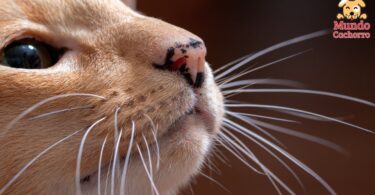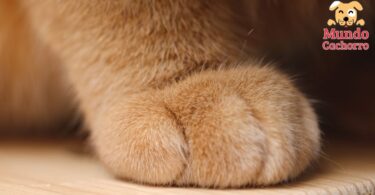Cats go through two teething phases. The first of these phases is when the deciduous teeth, known as milk teeth, erupt. The second phase of dentition in cats is when the milk teeth are replaced by permanent teeth. This is a natural process in the life of felines, as well as in most mammals.
Indice
In this post we tell you about how you can help your kitty when it is going through the different stages of this process. This way, you can learn a little more about what it is and what actions to take so that your kitty can be as well as possible.
Teething process in cats
At birth, cats have no teeth. The logic behind this is that they simply do not need them because their source of nutrition is breast milk. However, kittens are quickly weaned, so they need to develop their teeth early to be able to feed.
When they start teething, their jaws are still too small to support adult teeth. That is why they first develop the so-called milk teeth. After a short time, these little teeth will fall out and the permanent teeth will begin to appear.
The teething process in cats begins approximately two weeks after birth. At this time, the incisors begin to sprout. Between the second and fourth week of a kitten’s life, teeth are usually visible on the front of the jaw, both above and below. There are usually six teeth at the top and six teeth at the bottom.
Between the third and fourth week of life, the kittens’ canines will sprout. These are four long teeth located on each outer side of the incisors. Two canines will be in the upper jaw and two canines in the lower jaw.
Between the fourth and sixth week of a kitten’s life, the premolars will begin to emerge. They are the last teeth to appear. Cats have three premolars on each side in the upper jaw, while in the lower jaw they have two on each side.
When the kitten is eight weeks old, it is normal for it to have 26 milk teeth. That is, the twelve incisors, the four canines and the ten premolars. Be aware that baby teeth are smaller and sharper than an adult cat’s teeth and may appear somewhat more translucent.
Teeth of an adult cat
Between the third and fourth month of your cat’s life you will notice that the incisors begin to fall out. At this time, the baby teeth will begin to be replaced by the teeth that the cat will have throughout its life. When the cat is about six months old, the teething process will be complete. On the other hand, sometimes you will be able to find the teeth when they are changing them or sometimes not, since it is normal for them to swallow them.
One thing to keep in mind is that a teething kitten may show discomfort or signs of irritation. They may also have difficulty chewing hard foods and drooling while teething. To support the process, you can give your kitten special chewing toys and if you see that it has difficulty eating, you can give it wet food.
Image courtesy of https://pixabay.com, all rights reserved.







